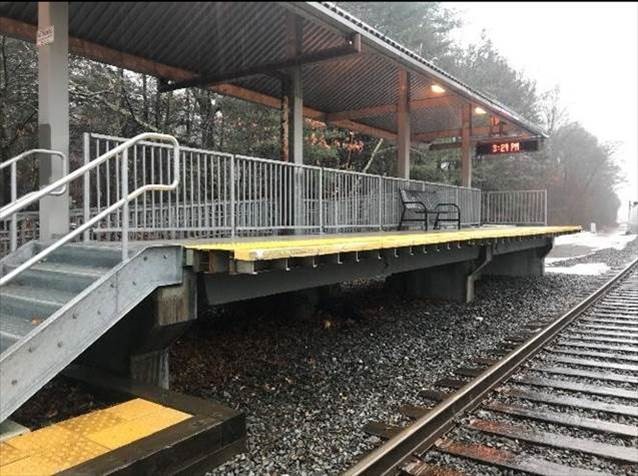 Last week, CA presented a webinar on the design details of our FRP Double Tee panels for rail and transit platforms. These lightweight, prefabricated panels have found a good fit in platform rehabilitation and new construction. During the webinar, attendees sent in questions. Some, but not all, were answered during the webinar. This blog provides those questions (that others may be asking also) along with our answers.
Last week, CA presented a webinar on the design details of our FRP Double Tee panels for rail and transit platforms. These lightweight, prefabricated panels have found a good fit in platform rehabilitation and new construction. During the webinar, attendees sent in questions. Some, but not all, were answered during the webinar. This blog provides those questions (that others may be asking also) along with our answers.
Q: What is your experience in discussing and convincing clients (DOTs and rail entities) that the design engineer's proposal to use FRP is advantageous when compared to concrete?
A: We have found agencies in the areas that must use de-icing chemicals to ensure safety of their passengers to be very receptive. Concrete deterioration is severely shorting the life of the stations to even just 15 years. And the surface spalling creates a tripping hazard. The corrosion resistance of FRP combined with the ease of installation within hectic train schedules is the combination that garners acceptance. Different agencies have different comfort levels, but we find that showing the advantages, limitations and technical details has been the way to convince the agencies.
Q: Could you provide some information on typical problems & solutions for post-installed anchorage of items after construction?
A: The anchorage of the platform panels to the support piers using bolted clip connections is similar to the clip connection successfully used for 15 years for FRP pedestrian bridge decking. The biggest issue in the past was using neoprene pad as a shim/interface between FRP and steel or concrete in the first few years. Neoprene is not easy to bond in place. Over time some of the neoprene would slide/vibrate out of position. An interface is not needed on steel supports since both the steel and FRP surfaces are relatively smooth. For the FRP Tee panels, we are attaching UHMW PolyEthylene pads to the expansion end of the FRP panel that sits on concrete piers. This provides a low-friction, abrasive-resistive interface.
Q: Can you comment on fire resistance quickly?
A: The standard FRP platform panels are combustible when exposed to a fire source. When the source is removed, the FRP is self-extinguishing. The panels have a Class 1 rating per ASTM E-84 for flame spread testing. The flame spread is slow; allowing passengers time to leave the station and meet egress requirements. There are FRP materials that are non-combustible that CA provides for tunnel applications, but the material costs more than the baseline material.
Q: For indoor use?
A: The standard panels are for exterior stations only due to the flame spread and smoke generation.
Q: Have you done any heated platforms?
A: We have supplied heated bridge decks. We are working with a few agencies on heated rail platforms and have a separate presentation package on this that we can share. The technology uses plate resistor technology inside the FRP. This improves the durability of the system compared to linear electric wire and liquid systems. The sandwich construction of the foam-interior of the FRP panels results in a very efficient thermal results.
Q: How do you spec this on a design-bid-build project? Do you have a special provision?
A: Being a relatively new technology, national standards are not yet in place. The requirements are in special provisions. We have a general specification that we can provide in Word format for customization by designers and agencies. We can also provide examples of the specifications from agencies with FRP platforms in use. Key items are having performance based requirements to avoid a proprietary spec; and having strong manufacturer qualifications to ensure adequate experience.
